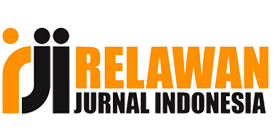Selection of maize lines resistant to drought stress using PEG 6000 in the vegetative phase
Abstract
Selection of maize lines for drought stress is the initial step in developing maize varieties with high production characteristics and resistance to drought stress. The research aims to determine the characteristics of maize lines in the vegetative phase and to select for resistance of maize lines in the vegetative phase using PEG 6000. The research used a Randomized Complete Block Design (RCBD), which was arranged factorially with three replications and two treatments. The number of treatments in this study was 40 treatment combinations, so there were 120 experimental units. Factor I was genotype, and factor II was the giving of PEG-6000 solution. All maize lines were planted in polybags measuring 20 x 20 cm. There are two levels of PEG 6000 solution treatment: 0% concentration (optimum condition) and 10% concentration, which is equivalent to -0.19 Mpa (drought stress condition) (Mexal et al., 1975). When the plants are 10 days after planting (DAP), drought stress is applied using a 10% concentration of PEG 6000 solution. The observed characters were plant height, root length, leaf area, leaf chlorophyll, plant wet weight, and plant dry weight. The research results showed that drought stress treatment mostly reduced the character values of plant height, root length, leaf area, leaf chlorophyll, plant wet weight, and plant dry weight. All tested lines showed significant differences in all tested characters against optimum condition treatments and drought stress. The lines resistant to drought stress were G4, G9, G11, G13, G14, G15, G16, G17, and G19.
Keywords
Full Text:
PDF (Bahasa Indonesia)References
Ahluwalia, O., Singh, P. C., & Bhatia, R. (2021). A review on drought stress in plants: Implications, mitigation and the role of plant growth promoting rhizobacteria. In Resources, Environment and Sustainability (Vol. 5). Elsevier B.V. https://doi.org/10.1016/j.resenv.2021.100032
Aldillah, R. (2018). Strategi Pengembangan Agribisnis Jagung di Indonesia. Analisis Kebijakan Pertanian, 15(1), 43. https://doi.org/10.21082/akp.v15n1.2017.43-66
Amzeri, A., Badami, K., Santoso, S. B., & Sukma, K. P. (2022). Morphological and molecular characterization of maize lines tolerance to drought stress. Biodiversitas, 23(11), 5844–5853. https://doi.org/10.13057/biodiv/d231138
Amzeri, A., Suhartono, Fatimah, S., Pawana, G., & Sukma, K. P. W. (2024). COMBINING ABILITY ANALYSIS IN MAIZE DIALLEL HYBRID POPULATIONS UNDER OPTIMUM AND DROUGHT STRESS CONDITIONS. Sabrao Journal of Breeding and Genetics, 56(2), 476–492. https://doi.org/10.54910/sabrao2024.56.2.3
Anbarasan, S., & Ramesh, S. (2021). The Role of Plant Roots in Nutrient Uptake and Soil Health. Plant Science Archives, 6(1), 5–8. https://doi.org/10.51470/PSA.2021.6.1.05
Dinas Pertanian Tanaman Pangan Holtikultura dan Perkebunan Bangkalan. (2021). Data Produksi Jagung Di Kabupaten Bangkalan Tahun 2017-2020.
Febriandaru, G., & Saptadi, D. (2019). Uji Potensi Hasil Hibrida-Hibrida Baru Jagung (Zea mays L.) Potential Yield Test of New Hybrids Maize (Zea mays L.). Jurnal Produksi Tanaman, 7(6), 986–995.
Firdaus, N. M., Mudyanti, W., & Sugiyarto, S. (2022). Physiological and phytochemical characters of Eleutherine palmifolia affected by treatment of variation in light intensity and water capacity. Cell Biology and Development, 4(1). https://doi.org/10.13057/cellbioldev/v040103
Fischer, R., & Maurer, R. (1978). Drought resistance in spring wheat cultivars. I. Grain yield response. Aust. J. Agric. Res, 29, 897–912.
Fitriana, A., Hanani, N., & Fahriyah, F. (2024). Dampak Kebijakan Domestik Terhadap Produski Dan Harga Jagung Domestik Di Indonesia. Jurnal Ekonomi Pertanian Dan Agribisnis, 8(3), 1077–1089. https://doi.org/10.21776/ub.jepa.2024.008.03.21
Hu, F., Zhang, Y., & Guo, J. (2023). Effects of drought stress on photosynthetic physiological characteristics, leaf microstructure, and related gene expression of yellow horn. Plant Signaling and Behavior, 18(1). https://doi.org/10.1080/15592324.2023.2215025
Karami, S., Shiran, B., & Ravash, R. (2025). Molecular investigation of how drought stress affects chlorophyll metabolism and photosynthesis in leaves of C3 and C4 plant species: A transcriptome meta-analysis. Heliyon, 11(3). https://doi.org/10.1016/j.heliyon.2025.e42368
Lamlom, S. F., Abdelghany, A. M., Ren, H., Ali, H. M., Usman, M., Shaghaleh, H., Alhaj Hamoud, Y., & El-Sorady, G. A. (2024). Revitalizing maize growth and yield in water-limited environments through silicon and zinc foliar applications. Heliyon, 10(15). https://doi.org/10.1016/j.heliyon.2024.e35118
Mexal, J., Fisher, J. T., Osteryoung, J., & Reid, C. P. P. (1975). Oxygen Availability in Polyethylene Glycol Solutions and Its Implications in Plant-Water Relations1. In Plant Physiol (Vol. 55). https://academic.oup.com/plphys/article/55/1/20/6074457
Mulyani, A., & Sarwani, M. (2013). The Characteristic and Potential of Sub Optimal Land for Agricultural Development in Indonesia. Jurnal Sumberdaya Lahan, 7(1), 46–57.
Mustamu, N. E., Tampubolon, K., Alridiwirsah, Basyuni, M., AL-Taey, D. K. A., Jawad Kadhim AL Janabi, H., & Mehdizadeh, M. (2023). Drought stress induced by polyethylene glycol (PEG) in local maize at the early seedling stage. Heliyon, 9(9). https://doi.org/10.1016/j.heliyon.2023.e20209
Nicotra, D., Mosca, A., Dimaria, G., Massimino, M. E., Di Stabile, M., La Bella, E., Ghadamgahi, F., Puglisi, I., Vetukuri, R. R., & Catara, V. (2025). Mitigating Water Stress in Plants with Beneficial Bacteria: Effects on Growth and Rhizosphere Bacterial Communities. International Journal of Molecular Sciences, 26(4). https://doi.org/10.3390/ijms26041467
Panda, D., Mishra, S. S., & Behera, P. K. (2021). Drought Tolerance in Rice: Focus on Recent Mechanisms and Approaches. In Rice Science (Vol. 28, Issue 2, pp. 119–132). Elsevier B.V. https://doi.org/10.1016/j.rsci.2021.01.002
Prasetyo, R., Kartika Sari, M., & Kurnia Lestari, Y. (2024). Penguatan Ekosistem Jagung: Isu, Tantangan, Kebijakan (Vol. 6, Issue 1).
Qiao, M., Hong, C., Jiao, Y., Hou, S., & Gao, H. (2024). Impacts of Drought on Photosynthesis in Major Food Crops and the Related Mechanisms of Plant Responses to Drought. In Plants (Vol. 13, Issue 13). Multidisciplinary Digital Publishing Institute (MDPI). https://doi.org/10.3390/plants13131808
Seleiman, M. F., Al-Suhaibani, N., Ali, N., Akmal, M., Alotaibi, M., Refay, Y., Dindaroglu, T., Abdul-Wajid, H. H., & Battaglia, M. L. (2021). Drought stress impacts on plants and different approaches to alleviate its adverse effects. Plants, 10(2), 1–25. https://doi.org/10.3390/plants10020259
Song, L., Jin, J., & He, J. (2019). Effects of severe water stress on maize growth processes in the field. Sustainability (Switzerland), 11(18). https://doi.org/10.3390/su11185086
Sun, W., He, Z., Liu, B., Ma, D., Si, R., Li, R., Wang, S., & Malekian, A. (2024). Changes in Photosynthetic Efficiency, Biomass, and Sugar Content of Sweet Sorghum Under Different Water and Salt Conditions in Arid Region of Northwest China. Agriculture (Switzerland), 14(12). https://doi.org/10.3390/agriculture14122321
Vijayaraghavareddy, P., Lekshmy, S. V., Struik, P. C., Makarla, U., Yin, X., & Sreeman, S. (2022). Production and scavenging of reactive oxygen species confer to differential sensitivity of rice and wheat to drought stress. Crop and Environment, 1(1), 15–23. https://doi.org/10.1016/j.crope.2022.03.010
Wahid, W., Tando, E., Sari Murni, W., Pengkajian Teknologi Pertanian Maluku, B., Pengkajian Teknologi Pertanian Sulawesi Tenggara, B., & Pengkajian Teknologi Pertanian Jambi, B. (2020). Optimalisasi Pengelolaan Lahan Suboptimal Melalui Aplikasi Teknologi Pertanian dalam Mendukung Ketersediaan dan Ketahanan Pangan Suboptimal Land Use Optimization Efforts Through the Support of Agriculture Technology in Support National Food Availability and Security.
Yang, X., Lu, M., Wang, Y., Wang, Y., Liu, Z., & Chen, S. (2021). Response mechanism of plants to drought stress. In Horticulturae (Vol. 7, Issue 3). MDPI AG. https://doi.org/10.3390/horticulturae7030050
Yavas, I., Jamal, M. A., Din, K. U., Ali, S., Hussain, S., & Farooq, M. (2024). Drought-Induced Changes in Leaf Morphology and Anatomy: Overview, Implications and Perspectives. In Polish Journal of Environmental Studies (Vol. 33, Issue 2, pp. 1517–1530). HARD Publishing Company. https://doi.org/10.15244/pjoes/174476
Yerzhebayeva, R., Didorenko, S., Bastaubayeva, S., Amangeldiyeva, A., Maikotov, B., Kassenov, R., & Shavrukov, Y. (2024). Soybean Drought Tolerance and Escape: Field Trial Assessment of Yield, Maturity Groups and Smooth-Wrinkled Seed Coats in Kazakhstan. Agriculture (Switzerland), 14(11). https://doi.org/10.3390/agriculture14111884
Zhang, Z., Xie, X., Naseer, M. A., Zhou, H., Cheng, W., Xie, H., Qin, L., Yang, X., Jiang, Y., & Zhou, X. (2024). Screening and Physiological Responses of Maize Inbred Lines to Drought Stress in South China. Sustainability, 16(17), 7366. https://doi.org/10.3390/su16177366
Zia, R., Nawaz, M. S., Siddique, M. J., Hakim, S., & Imran, A. (2021). Plant survival under drought stress: Implications, adaptive responses, and integrated rhizosphere management strategy for stress mitigation. In Microbiological Research (Vol. 242). Elsevier GmbH. https://doi.org/10.1016/j.micres.2020.126626
DOI: https://doi.org/10.21107/agrovigor.v18i2.30743
Refbacks
- There are currently no refbacks.
Copyright (c) 2025 Nur Iman Arifin



2.png)









